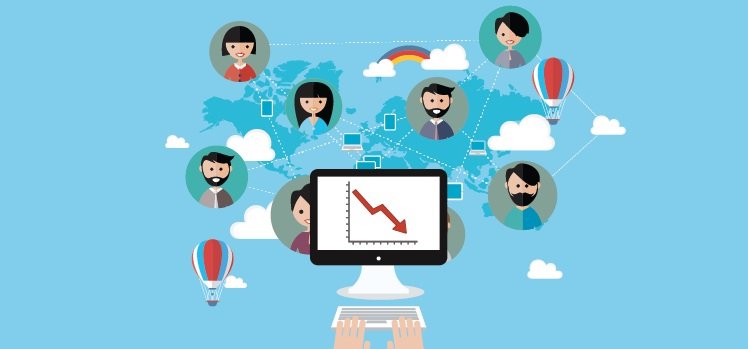
For all (or most) organizations, relationships are everything. This is especially true for nonprofits.
You’d agree — every dollar donated, every hour volunteered, and every supporter has the potential to drive real change.
But keeping track of all these connections and making the most of them can be tricky.
Here’s where a CRM for nonprofits can make all the difference.
We get it — having a fancy new tool in place is great. But what’s even better is using that technology to supercharge your fundraising efforts.
Whether you’re new to CRM software for nonprofits or aiming to upgrade your current system, these strategies will help you make the most of it.
Looking for a CRM for your organization? Explore Salesforce for nonprofits.
1. Segment your donor base for targeted communications
One size rarely fits all, especially when it comes to communications.
For nonprofits, your supporters are a diverse group with different motivations, interests, and giving capacities.
Using a CRM for nonprofits, you can segment your donor base into specific, targeted groups. This can be based on various criteria such as donation history, engagement level, geographic location, or areas of interest.
For example, a CRM solution can help you create segments like “monthly donors,” “first-time givers,” or “event participants.”
Once you’ve segmented your donors, you can customize your messages to match each group’s interests. These personal touches matter — boosting engagement and building stronger connections for a common cause.
Alt text: CRM for nonprofits.
2. Automate communication for consistent engagement
Consistency is key to maintaining donor relationships.
However, keeping up with regular communication can be challenging, especially with limited resources.
This is where CRM systems for nonprofits can make a significant difference.
Automation features allow you to schedule and send personalized emails, reminders, and thank-you notes at the right time without manual effort.
Here’s an example: Let’s say you have a new donor. You want to guide them through your nonprofit’s history.
Using a CRM for nonprofits, you can set up a series of automated emails to guide your new donor through your organization’s story, impact, and opportunities to get involved. This helps you maintain consistent communication, without needing to be handson directly.
3. Leverage data for informed decision-making
The recipe for your organization’s success is in your data. And a good CRM for nonprofits helps you analyze this wealth of information.
But simply analyzing data isn’t enough — it all comes down to how you use it.
CRM systems help you keep tabs on donor behavior, spot patterns, and see how well your campaigns do. This numbers-based method helps you make data-driven decisions, fine-tune your plans, and put your resources where they’ll do the most good.
Here’s an example: Let’s say you see that one kind of email campaign always falls short. You might need to change your message or focus more on donors who are into your cause. Your CRM can show you numbers like open rates, bounce rates, and click-through rates to help you fix it.
4. Streamline fundraising events with CRM integration
Fundraising events form the basis of nonprofit fundraising strategies.
These events, like galas, charity runs, or online auctions, need careful planning and execution.
CRM for nonprofits can work well with event management tools to simplify the whole process.
Your CRM can handle details like keeping track of RSVPs, managing donations, and sending follow-ups. This lets your team concentrate on other parts of the event, creating a memorable experience for your supporters.
After the event, your CRM can dig into attendee details, track how engaged everyone was, and identify potential donors. This helps you plan your future events more strategically!
5. Use CRM analytics to spot big donors
Big donors are key to keeping nonprofit organizations going.
Finding and nurturing these donors needs a well-thought-out approach, and here’s where nonprofit CRM solutions excel.
With advanced analytics, your CRM can spot potential big donors based on their donation history, how involved they are, and other key signs.
Once identified, you can come up with specific plans to build stronger connections. This might mean sending them personal messages, giving them special thanks, or offering them unique chances to get involved with your group.
Alt text: Image showing trees on coin stacks. This is a symbolic image depicting how CRM analytics can help spot big donors.
Best practices for using CRM for nonprofits
Implementing a CRM for nonprofits is one thing, but it’s only as good as you make it. To really make it work for you, there are a few key practices to keep in mind.
- Set clear goals: Know what you want to accomplish before you start using your CRM. Whether you aim to increase donor engagement or make your fundraising more efficient, having specific targets will guide you and help you gauge your progress
- Keep your data fresh: Update your CRM with new information about donors and contributions. This includes deleting old and irrelevant data. This helps you make informed decisions and prevents confusion or mishaps
- Train your team: CRM for nonprofits can be pricey — so it’s worth making sure everyone knows how to use it properly. Start with some solid training to get everyone up to speed, and don’t forget to do regular check-ins to cover any new features or updates
- Track and learn: Keep an eye on how your campaigns are performing through CRM reports and analytics. This helps you see what’s working and where you can improve, so you’re always making progress
Over to you
Many organizations have this one common misconception — they think picking the right CRM for nonprofits is just a technical choice. However, it’s also a crucial strategic decision.
The right CRM can make your operations much more efficient and grow alongside your organization.
So, take time and do your research to find the best fit for your needs.
Involve your team in the decision-making process to ensure everyone’s needs are met and the system aligns with your goals.
Remember, a CRM isn’t just about managing data — it’s a tool that can streamline your operations and support your growth. Choose wisely, and you’ll set your nonprofit up for better efficiency and greater success.







